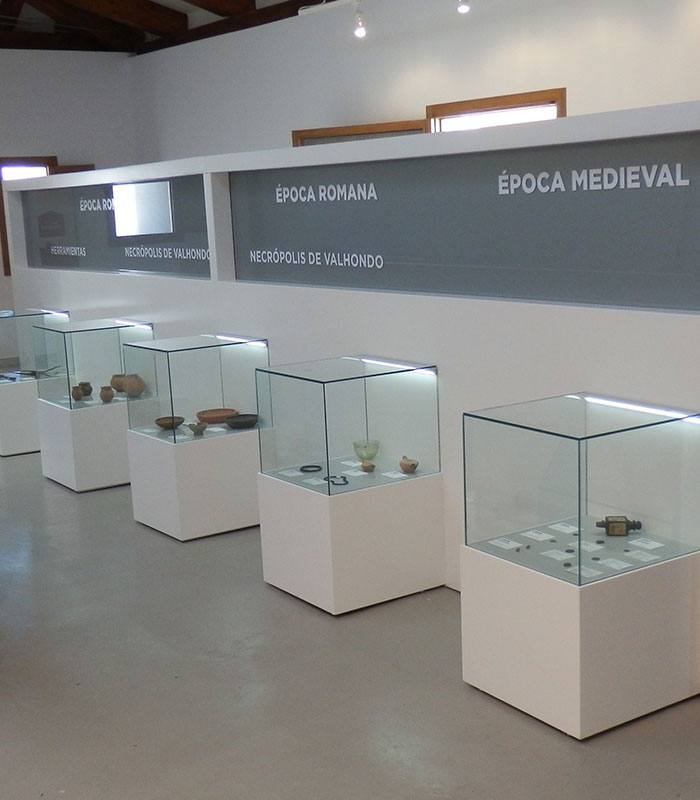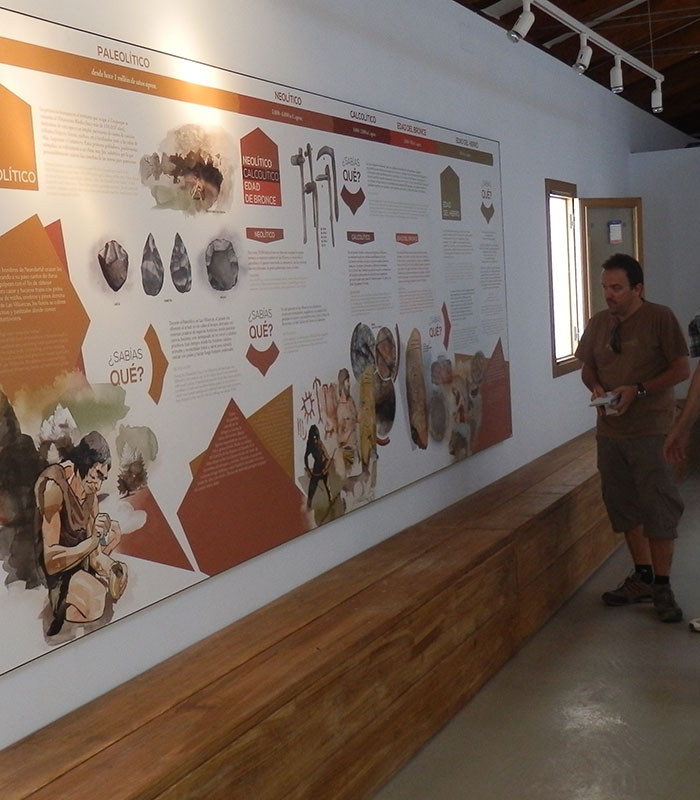The replica of a cave with cave paintings and the reproduction of several of the pieces of what is known as the Bronze-Age Treasure of Berzocana are some of the attractions of the Archaeology Interpretation Centre of Berzocana. By visiting it we can go on an imaginary journey through the development and the history of all the cultures established in these valleys over millennia. More than 250 archaeological examples from different periods are evidence of this.
It is one of the interpretation and information centres of the Villuercas-Ibores-Jara Global Geopark of the UNESCO and one of the most important for understanding the past of the area. It opened its doors in 2013, although what is known as the Archaeological Museum of Berzocana was its forerunner. Its collection has been enriched by examples from the excavations which the Universidad de Extremadura, the Universidad Complutense de Madrid, and the Universidad de Barcelona have carried out all over the area. It is worth emphasising those of the location itself, Berzocana, which for three years allowed the location and excavation of over a hundred tombs of various types.
An important settlement which contributed very valuable examples is the late Roman site of ‘Cuesta Quemada’ of the Dehesa Boyal de Valhondo. The remains were determined to be of a rural mining settlement of the 3rd or 4th century A.D. Once it has been studied a large proportion of the recovered material, which is of incalculable value to the culture of Extremadura, is exhibited to the public in this Berzocana centre.

